Facilities
Eyetracking studies

For eyetracking studies, our lab uses the EyeLink 1000 Desktop System which includes the EyeLink EL high speed camera with desktop mount and the EyeLink 1000 Tracking Application. To run the tracking application, we use a Dell Precision 390 with a 1.86GHz Intel Core 2 CPU and 1GB of RAM. We use one of our regular data collection machines with a ViewSonic G90fb CRT monitor running at 60Hz or 85 Hz to display the experiments.
Non-eyetracking studies
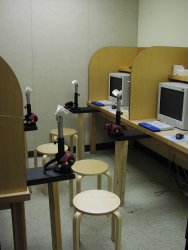
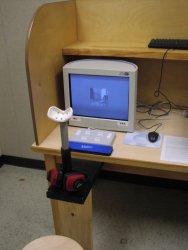
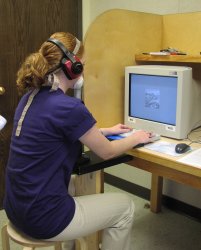
For non-eyetracking studies, data collection is performed by running the experiments on four Dell Optiplex 170L PCs, each of which is equipped with a 2.8GHz Pentium 4 and 512 MB of RAM. We use Samsung SyncMaster 957MB S CRT monitors running at a refresh rate of 85 hertz for each of these computers. We keep these monitors at a constant brightness and contrast using a Spyder4 Pro Colorimeter and calibration software. The project development system used for programming and image processing is equipped with 3.2 GHz Pentium 4 HT processor and 1.5 GB of RAM.
We use 4 Cedrus RB-834 button boxes to record subject response and reaction times with millisecond accuracy.
Software Systems
We use the following software systems in our lab for research and experimental studies:
Experiment Builder by SR Research (makers of the Eyelink2 eyetracker) is used for experiment creation.
PYTHON is used for programming the data sequence generation system
MATLAB is used for complex image processing
JAVA is used for is used for simple image processing
SPSS is used for statistical analysis.
Other Infrastructure
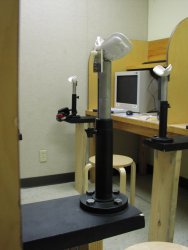
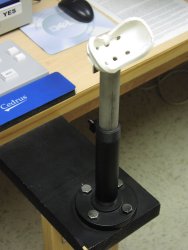
We have individual study carrels for each of our subjects. We use chin rests specially designed and made for our lab to keep a constant viewing distance in our experiments. These chin rests are a revised version of the design used at Greg Zelinsky's SUNY Stonybrook lab. They have adjustable height, are comfortable for participants, and are less expensive and sturdier than most commercially sold chin rests.
